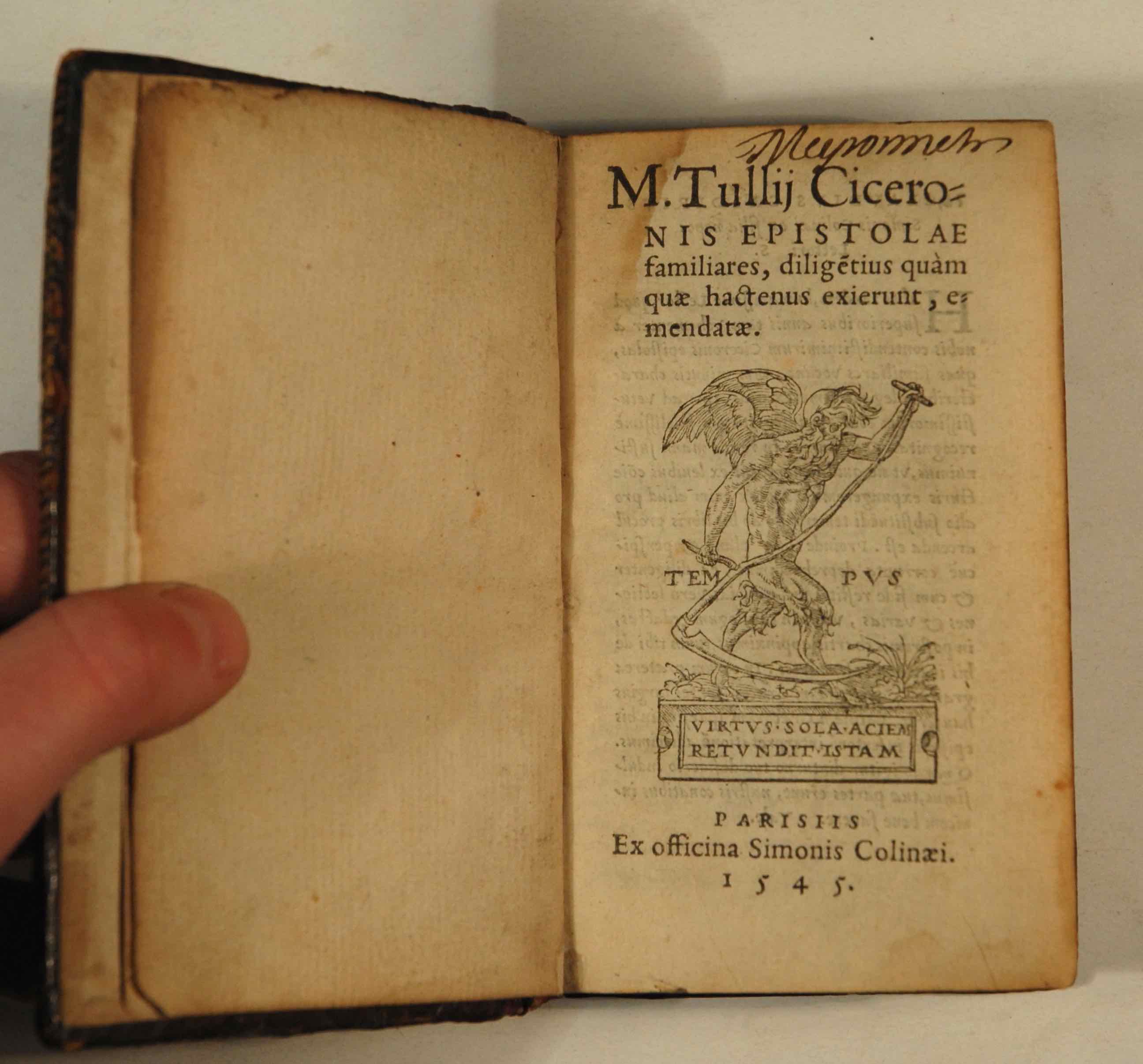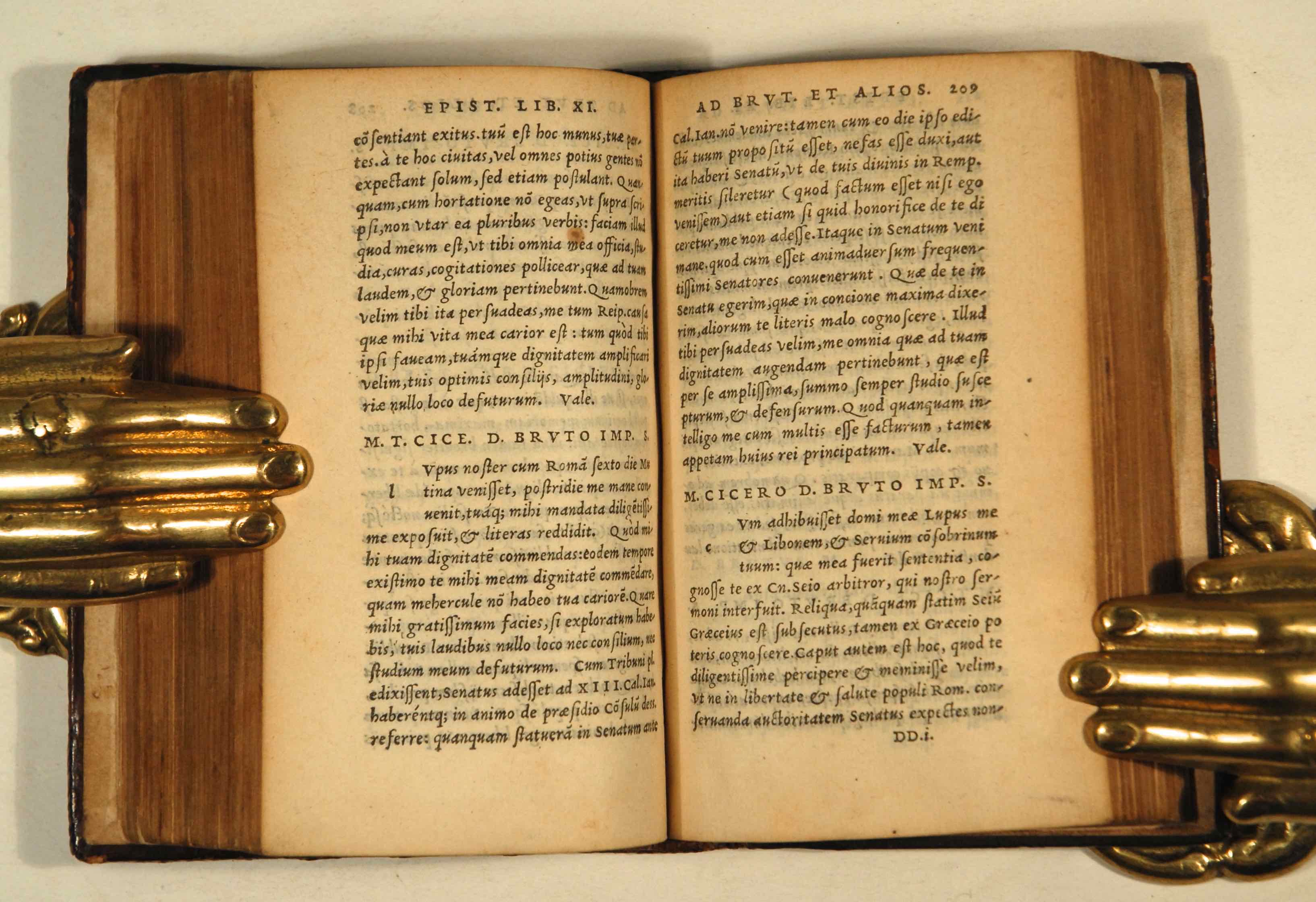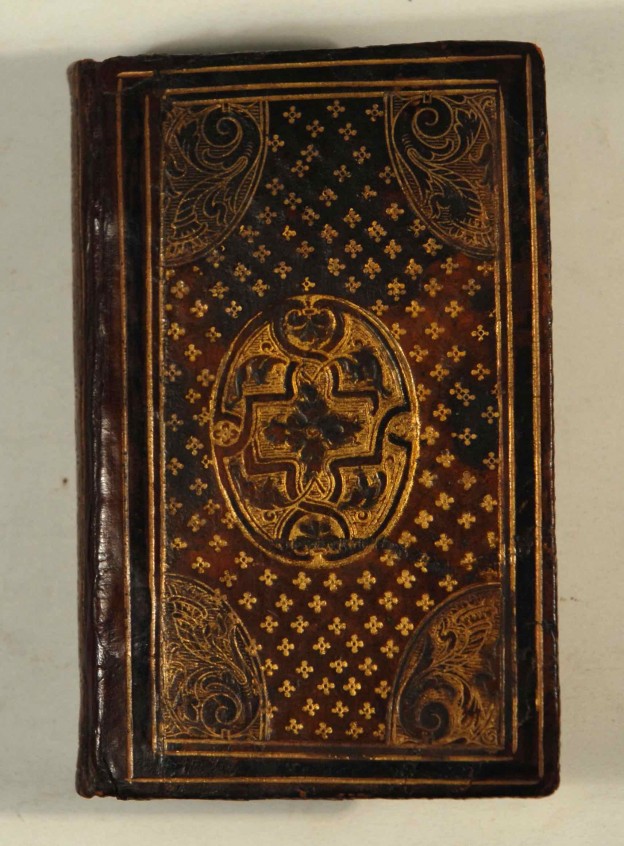CICERO, Marcus Tullius
BEAUTIFULLY BOUND AND RARELY COMPLETE
Epistolae familiares
Paris, ex officina Simonis Colinaei, 1545£3,950.00
16mo. ff 327, [ix]. A-2T . (last two ll. blank). Italic letter, titles in Roman, some Greek. Title page with Colines’ “Tempus IV” woodcut device, capital spaces with guide letters autograph ‘Meyromet’ in C17th hand at head of t-p. Light age yellowing, light mostly marginal waterstaining in places, the odd marginal spot. A very good, crisp copy, in contemporary French calf, covers bordered with a double gilt rule filled in black, scrolled gilt blocked corner-pieces, blockstamped central gilt oval with a strap-work design, semé of small gilt flowers, spine finely gilt tooled in two large compartments of repeated scrolled tools, joints and corners restored, old spine laid down, a.e.g.
A very rare and most attractive copy of Cicero’s letters, beautifully printed in an elegant minuscule Italic by Simon de Colines, in a fine contemporary Parisian gilt tooled binding.
“First Colines pocket edition of Cicero’s ‘Epistolae familiares’, a rare book of which we were unable to locate another copy. [Schreiber’s copy is also very incomplete, ending with book VIII] Renouard, whose note for this edition is particularly garbled and incomplete, states that this was the only Colines imprint to bear Henri (sic) Estienne’s device. The text was overseen by Claude Chaudière, Regnault’s son. In the preface Claude emphasises his position as Colines’ grandson on his mothers side, and the care he has taken in establishing the text. After Colines’ death, in 1546, Regnault and Claude were to take over the printing house.” Schreiber. Renouard had probably never seen a copy as there is no sign of Estienne’s device.
Surprisingly, the work is particularly rare. We have located four copies on worldcat only, at Illinois, North Carolina, Glasgow and the Danish Nat. Lib.; the BNF does not have it and none are recorded in Italian libraries.
The binding is quite sumptuous for a pocket edition, almost certainly from Paris, and is similar in style, though on a miniature scale, to bindings of the same period by Claude De Piques, see British library Catalogue of Bindings shelfmark c20c15 and c48c2. s
Written over the course of many years from 65 B.C. onwards and compiled by Cicero’s personal secretary Tiro, the letters are often written in a subtle code to disguise particular political contents. The work is made up of Cicero’s letters to his friends, acquaintances and also their replies, there is one to a conspirator in Caesar’s murder, “I congratulate you. I rejoice for myself. I love you. I watch your interests; I wish for your love and to be informed of what you are doing and what is being done,” ( Fam. vi. 15). We know from others that Cicero thought about publishing some of his letters during his lifetime, but it is generally agreed that the Ad Familiares were published by Cicero’s friend Tiro, who suppressed his own letters and included those written to him at the end.
Cicero’s letters are among the most valuable sources of information on the period, we learn from him a great deal about daily life in Rome and the provinces, especially the province of Cilicia of which Cicero was sometime governor. There is no other period of antiquity for which we still possess such an immediate and intimate record and in such domestic detail.
Not in BM STC Fr. C16th or Adams. Schreiber 218 (t-p reproduced). Renouard 404-405.In stock





